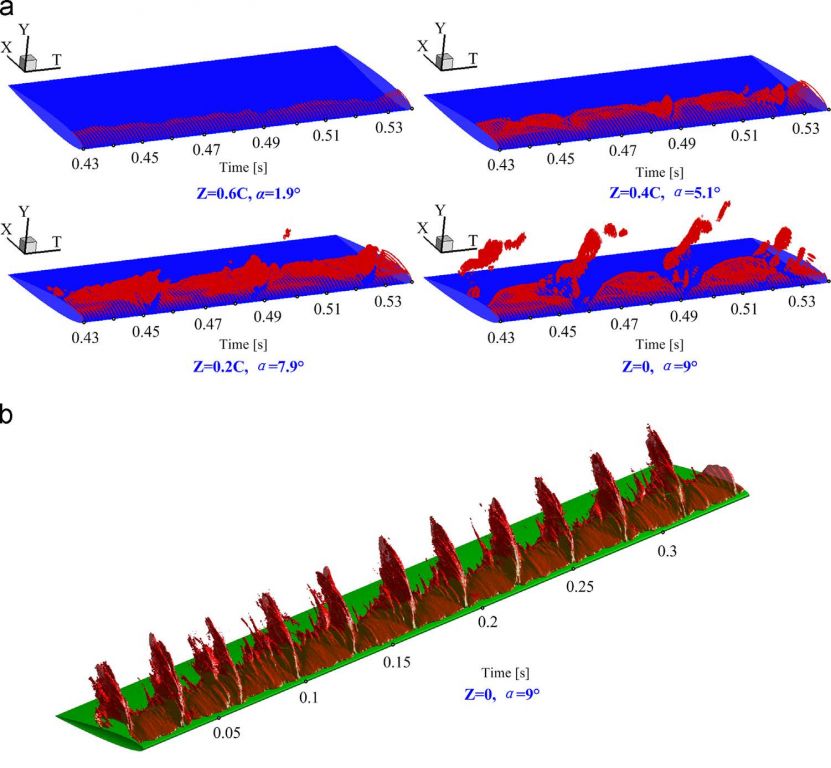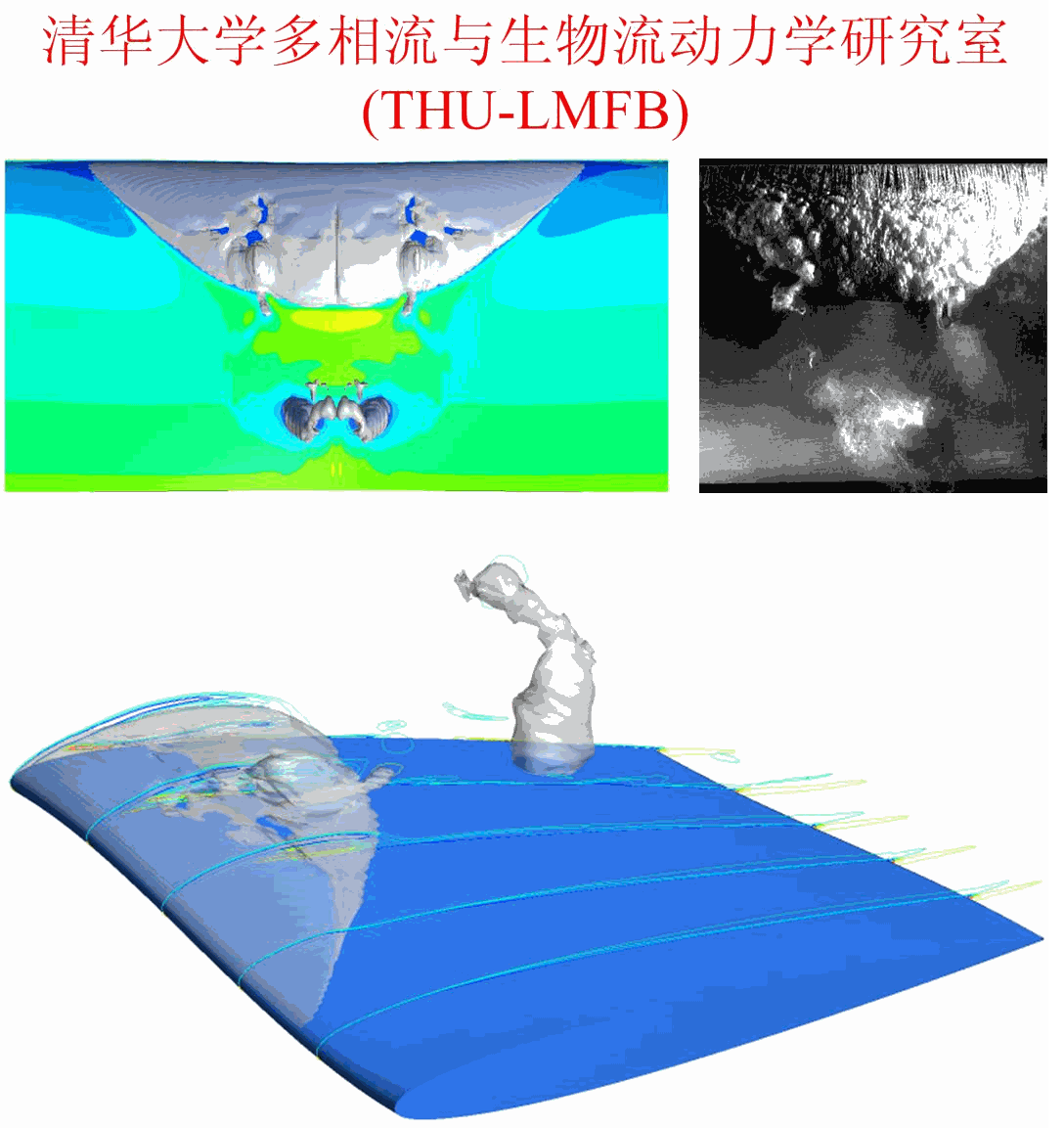博文
基于Reboud修正的空化RANS模拟分析及空化-漩涡相互作用机理研究
|||
Ji, B., Luo, X.W., Arndt, R.E.A., Wu, Y.L., 2014. Numerical simulation of three dimensional cavitation shedding dynamics with special emphasis on cavitation-vortex interaction. Ocean Engineering,87, 64-77. (http://dx.doi.org/10.1016/j.oceaneng.2014.05.005)
Highlights
•3D cavitating turbulent structure around a twisted hydrofoil is simulated.
•Three types of flow behavior along the hydrofoil suction side are illustrated.
•The mechanism of cavitation–vortex interaction is discussed.
Abstract: Recent experiments showed that there is an interaction between the fluid vortex formation and cavitation, but the mechanism is still an open problem. In the present paper, the structure of the cavitating flow around a twisted hydrofoil was investigated numerically using the mass transfer cavitation model and the modified RNG k-ε model with a local density correction for turbulent eddy viscosity. The predicted three dimensional cavity structures and the shedding frequency agree fairly well with experimental observations. Three types of flow behavior along the suction side of the twisted hydrofoil are discussed. Further analysis of the flow field reveals that cavitation promotes vortex production and increases the boundary layer thickness with local separation and the flow unsteadiness. Finally, the influence of cavitation on the vorticity distribution is illustrated using the vorticity transport equation in a variable density flow and is demonstrated by the contribution of vortex stretching, vortex dilatation and baroclinic torque terms.

Fig.7. Time evolution of cavitation development at different planes: (a) Numericalresults of cavitation development in time at planes with z=0, z=0.2C, z=0.4Cand z=0.8C of the twisted hydrofoil; and (b) Experimental results of cavitationdevelopment in time at middle plane (z=0) of the twisted hydrofoil (Foeth(2008)).

https://blog.sciencenet.cn/blog-497196-803909.html
上一篇:在清华度过的2年博士后生活——谨以此文纪念逝去的青春
下一篇:2014年最新SCI影响因子(7月30日发布)【可下载PDF版】